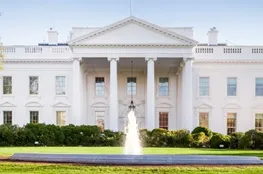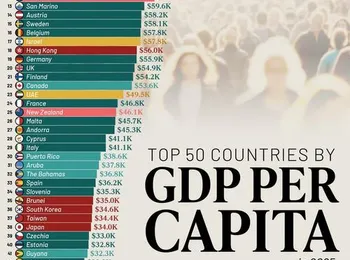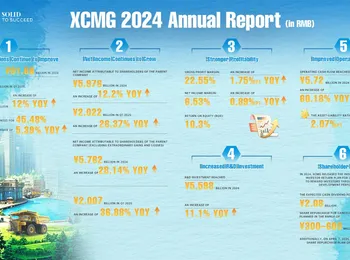The Big Story: Costs of shutdown rising National Economic Council Director Kevin Hasset warned Monday that the government shutdown could cost the U.S. economy approximately $15 billion a week. © AP In an interview on CNBC’s “Squawk Box,” Hasset cited an internal White House report suggesting the shutdown could have serious economic consequences if it continues for too long. "My friends over at the Council of Economic Advisers gave me a report at the end of the week that said that it costs the U.S. GDP [gross domestic product] about $15 billion a week for a shutdown, or about a tenth of a percent of GDP," Hasset said Monday. "And so if the shutdown continues for a long time, then there are going to be a lot of things that don’t happen, and it will show up in the GDP number," he continued. The White House memo also showed a monthlong shutdown would lead to an additional 43,000 unemployed people , not accounting for the 1.9 million federal civilian employees who are working without pay or are furloughed. An estimate from EY-Parthenon predicted the government shutdown would reduce GDP growth by $7 billion each week , or 0.1 percentage points in the fourth quarter. The hit to GDP reflects the reduced pay for furloughed federal workers, delayed government procurement of goods and services, and the resulting decline in final demand,
Key Economic Impacts of the Shutdown The escalating government shutdown is generating significant concern among economists and policymakers regarding its potential impact on the U.S. economy. The core of the issue stems from the disruption of government operations, leading to a cascade of negative consequences that directly affect economic growth and stability. The most immediate and widely discussed impact is the estimated $15 billion weekly cost to the U.S. economy, a figure prominently highlighted by National Economic Council Director Kevin Hasset. This substantial financial burden is based on an internal White House report, emphasizing the crucial role of GDP – the total value of goods and services produced within a country – in quantifying the economic fallout. The analysis reveals that a shutdown’s impact isn’t simply a static loss; rather, it’s a dynamic reduction in GDP, with each week of disruption translating into approximately a tenth of a percent decline. This figure underscores the vulnerability of the economy to prolonged governmental gridlock, as the absence of government spending and procurement activities directly impacts overall economic output. Furthermore, the long-term projections are alarming, with a month-long shutdown anticipated to result in an additional 43,000 unemployed individuals, a consequence compounded by the 1.9 million federal civilian employees facing delayed or suspended compensation. The impact extends beyond immediate job losses, affecting the broader economy through reduced consumer spending and business investment.
Additional Economic Assessments Beyond H’s initial estimate, other analyses corroborate the severity of the situation. EY-Parthenon’s prediction of a $7 billion weekly GDP reduction and a 0.1 percentage point decline in the fourth quarter further solidifies the economic risks associated with the shutdown. This assessment highlights the vulnerability of the U.S. economy to disruptions in government spending, which constitutes a significant portion of overall economic activity. The decline in GDP isn’t merely theoretical; it’s driven by tangible consequences, including the reduced pay for furloughed federal workers, a critical component of consumer spending, and the postponement of government procurement of goods and services, which directly impacts business investment and economic growth. The cumulative effect of these factors paints a concerning picture for the U.S. economy, underscoring the urgent need for a resolution to the shutdown.
Read more here. Welcome to The Hill’s Business & Economy newsletter, I’m Sylvan Lane — covering the intersection of Wall Street and Pennsylvania Avenue. Did someone forward you this newsletter? Subscribe here. Essential Reads * **Key business and economic news with implications this week and beyond:** * Bescent announces Social Security commissioner will also oversee IRS * Supreme Court rejects Google’s request to block Play Store injunction * **Trump says tariffs on medium- and heavy-duty trucks will go into effect Nov. 1** * President Trump on Monday said he would impose a 25 percent tariff on medium- and heavy-duty trucks coming into the United States starting Nov. 1. * **OpenAI signs deal for AMD chips after Nvidia agreement** * OpenAI has signed a deal with chipmaker AMD to obtain six gigawatts’ worth of the company’s AI chips, just weeks after unveiling a similar agreement with Nvidia. In Other News * **Branch out with more stories from the day:** * Trump says he’s open to health care deal with Democrats as shutdown hits Day 6 * (WASHINGTON (AP) — President Donald Trump said Monday that he’d be open to striking a deal with …) Good to Know * **Business and economic news we’ve flagged from other outlets:** * What People Think – Opinions related to business and economic issues submitted to The Hill: You’re all caught up. See you tomorrow! Copyright 2025 Nexstar Media Inc. All rights reserved. This material may not be published, broadcast, rewritten, or redistributed.”
























